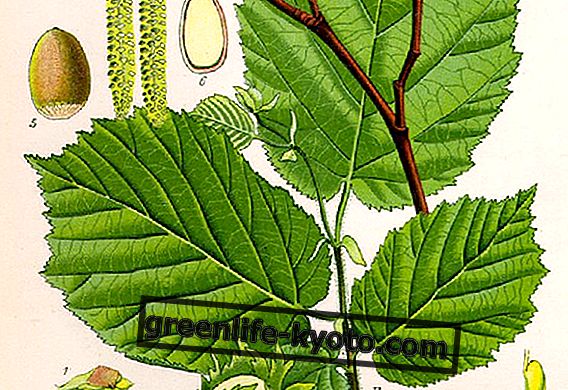Bearberry ( Arctostaphylos uva-ursi ) is a plant of the Ericaceae family. Known for its anti-inflammatory and antiseptic properties, it is useful for urinary tract disorders . Let's find out better.

Properties of bearberry
Bearberry leaves are used in herbal medicine against numerous bacterial strains commonly responsible for infections of the urogenital tract, because it acts both on inflammation and on infection . In fact the plant is able to determine an antimicrobial, anti-inflammatory and calming action, the continuous stimulation of urination.
Among the various active ingredients that make up its phytocomplex, arbutin is a glycoside with an isoquinoline structure, capable of breaking down in contact with urine in glucose and hydroquinone . This last process is favored by the alkalinity of the urine, therefore in the case of those bacteria that make the environment basic as Proteus vulgari s or Klebsiella pneumoniae, the use of the bearberry is more than ever appropriate; while in the case of acid urine it is good to artificially alkalize with sodium bicarbonate.
Hydroquinone, together with phenolic heterosides ((6-10%, ) present in the phytocomplex, performs an antibacterial action, especially against staphylococci and Escherichia coli, responsible for most urinary infections.
Gallic tannins (15-20%) protect the mucous membranes of the urogenital tract, hindering the adherence of the microbes to the epithelium; they have astringent properties as they counteract the excessive production of mucus, produced by inflamed tissues . This activity, in particular, is useful in case of diarrhea which is often associated with cystitis.
Finally the triterpenes (ursolic acid) and the flavonoids (iperina, isoquercitina) work in synergy with the arbutin, exercising a diuretic and anti-inflammatory action, very useful in infections, characterized by strong burning, which require a mechanical rinsing of the urinary ducts .
Bearberry can be effectively prescribed in cases of acute cystitis, chronic cystitis, urethritis, colobacillosis . An interesting indication of use, in the geriatric setting, is prostatic hypertrophy with an inflammatory and infectious component and catheter cystitis .
Method of use
INTERNAL USE
The most commonly recommended preparations are infusion, decoction or cold macerated. Fluid intake and the consequent diuretic activity have a cleansing action on the urinary tract, enhancing the antimicrobial activity of arbutin.
INFUSED: 1 tablespoon bearberry leaves, 1 cup of water
Pour bearberry into boiling water and turn off the heat. Cover and leave to infuse for 10 min. Filter the infusion and drink 4 cups a day between meals.
Mother tincture of bearberry : 80 drops in 1L and 1/2 mineral water, to be drunk throughout the day, away from meals.
You can learn more about the properties and uses of bearberry mother tincture

Contraindications of bearberry
The use of bearberry is not recommended in case of pregnancy, lactation and renal failure . Furthermore, if it is not recommended for prolonged use it may lead to irritation of the gastric mucosa, nausea and vomiting.
Description of the plant
Small shrub about 30 cm high with creeping branches. The leaves are obovate, leathery, evergreen, dark green, they change every three years.
The flowers are rosy, pendulous, they gather in small terminal clusters and carry small bratee at the base of the pedicel. The fruits are small red berries (drupes) with a not very pleasant taste, containing an inedible sour and powdery pulp.
The habitat of bearberry
Bearberry is widespread in northern Europe, Asia and North America ; it also grows well in northern and central Italy, on stony land and open wooded areas, mainly in the Alps and the Apennines.
Background
Unknown to the Greeks and the Latins, it seems to have been imported from Asia and then discovered by the French botanist Michel Adanson in 1763 who classified it with the term Arctostaphilos (from the Greek actòs meaning " bear " and staphilos " grapes ") for popular belief that the bears were greedy for it.
The first scientific studies on the properties of the plant began in Padua in 1764 with the pharmacologist Girardi, who demonstrated the solvent action on kidney stones.













